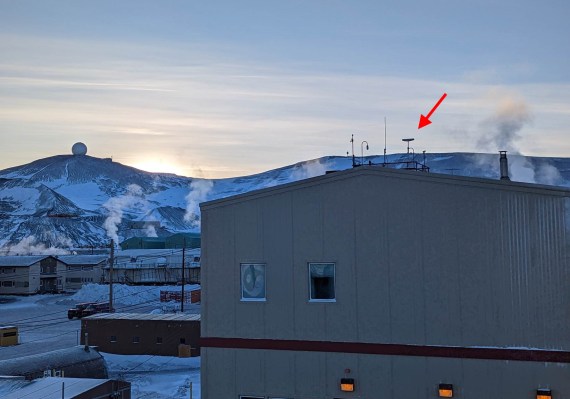SpaceX’s Starlink satellite internet service has finally arrived at McMurdo Station on the coast of Antarctica, meaning it is now available — at least potentially — on all seven continents.
The National Science Foundation, which funds the U.S. Antarctic Program at McMurdo and elsewhere, announced the news in a tweet, saying “NSF-supported USAP scientists in #Antarctica are over the moon! Starlink is testing polar service with a newly deployed user terminal at McMurdo Station, increasing bandwidth and connectivity for science support.”
McMurdo, being a major hub for climate science and geology, among other things, already had a fairly serious satellite uplink through a traditional provider. But as you might imagine, competition is fierce for the limited bandwidth available. Adding a Starlink terminal should at least partly alleviate those woes.
It’s not quite the traditional setup, though. As SpaceX noted, “In such a remote location like Antarctica, this capability is enabled by Starlink’s space laser network.”
Space lasers sound cool, and they are, since they enable high-speed connections between distant satellites — as long as you can keep the laser pointed in the right direction. SpaceX has been testing this in a limited capacity, with the ultimate goal of allowing Starlink satellites to form a sort of mesh network that can connect even far-flung locations like Antarctica and the middle of the ocean to the internet.
Of course that’s what satellites are meant to do in the first place, but you do it just anywhere. Think about it: If you’re sending a signal to a satellite in low Earth orbit above Antarctica, where’s it going to send that signal on to? It’s not like some other parts of Antarctica have great internet. It needs to send that signal up toward the rest of the world, where it can be relayed to a ground station connected to the web. Then it takes the same path back.
That may sound a bit convoluted, but network architecture is convoluted by nature.
The laser connections will be augmented in future versions of Starlink satellites, which should help the network in general be faster and more resilient. And SpaceX isn’t the first or only one using space lasers for communication — NASA had the jump on them by a couple decades and is looking into it as a way to provide high-speed internet for Artemis.
